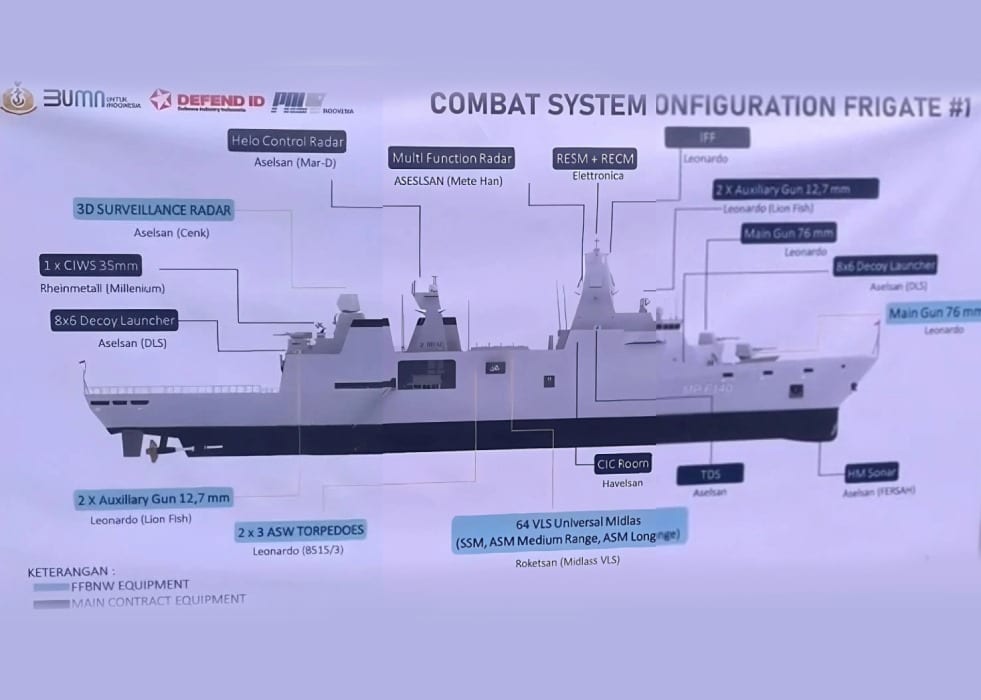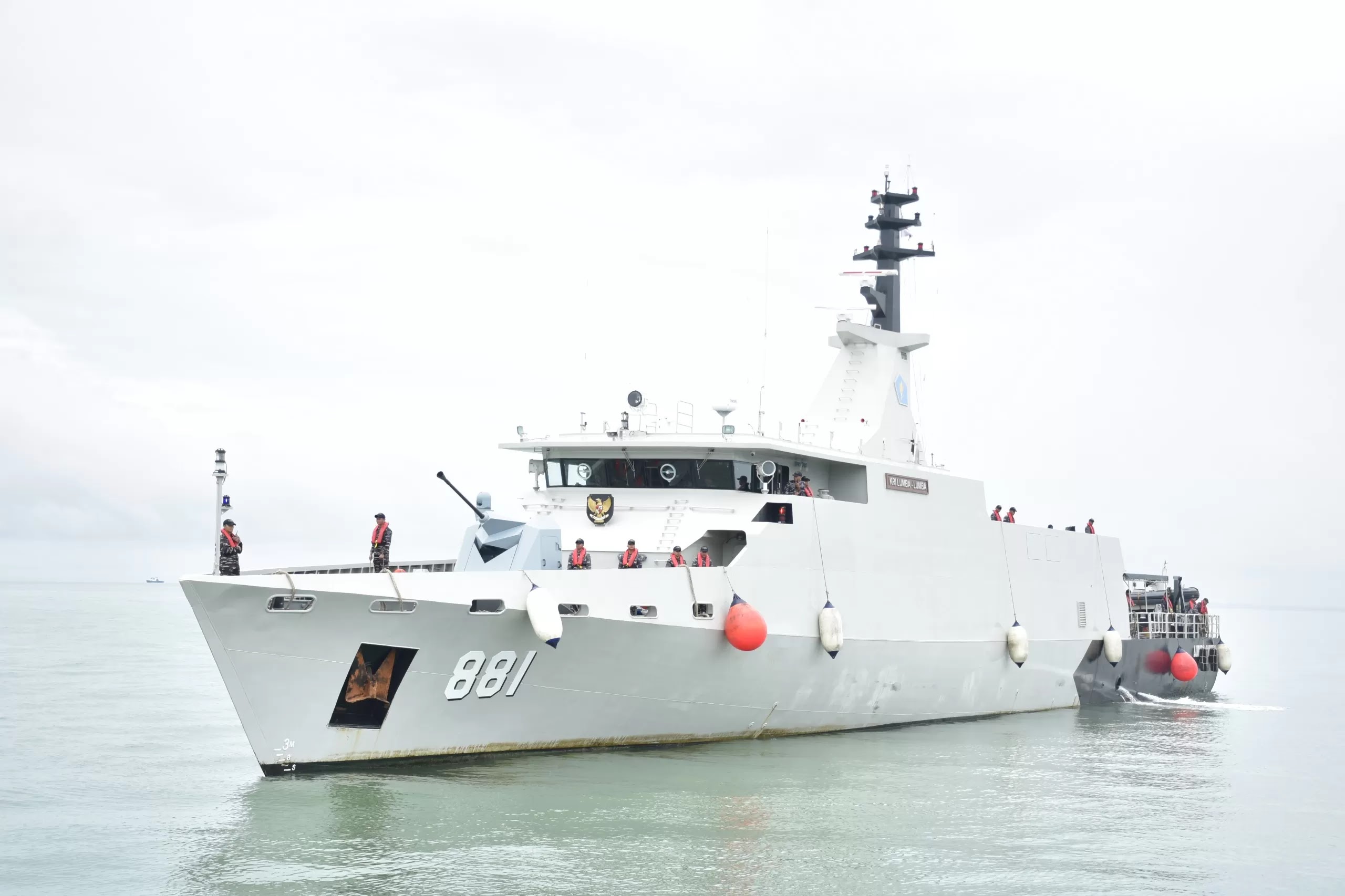The frigate’s equipment is categorized as “Fitted For, But Not With” (FFBNW) and “Main Contract Equipment”, with most weapons and sensors supplied by Turkish firms (Aselsan, Meteksan, Roketsan, and Havelsan) as well as Italian defense companies (Leonardo and ELT Group).
The FFBNW systems include:
The Main Contract Equipment includes:
Read more:

 www.navalnews.com
www.navalnews.com
The FFBNW systems include:
- CENK 400-N (referred as CENK-S aboard Turkish Navy news frigate TCG Istanbul) 3D S-band AESA long-range air and surface surveillance radar from Aselsan
- Two of the four LIONFISH 12.7 TOP remote weapon stations (RWS) from Leonardo
- Two B515/3 triple 324mm torpedo launchers from Leonardo for MU90 LWT torpedoes
- MİDLAS Universal Vertical Launching System (VLS) from Roketsan, consisting of eight 8-cell modules (totaling 64 cells) for various surface-to-air (SAM) and surface-to-surface (SSM) missiles. This is the most important weapon system on board the new frigate but paradoxically it is not included in the main contract!
- One of the two 76mm naval gun systems from Leonardo, installed at the bow in tandem position (B position).
The Main Contract Equipment includes:
- METE HAN X-band multi-function radar (MFR) from Aselsan, mounted on the main mast:
- “METE” is the name of CAFRAD’s X-Band module which comprises fixed face radar antennas
- “HAN” is the name of the IFF unit on the top of the CAFRAD, comprises omni-directional antenna. However, the image paradoxically identifies Leonardo as the IFF supplier with likely the SIR-M-PA or another SIR-M IFF and MSSR (Monopulse Secondary Surveillance Radar) interrogator
- Electronic Warfare (EW) suite from ELT Group, including R-ESM, C-ESM, COMINT and R-ECM capabilities (potentially identical to the ZEUS suite used on PPA-class vessels Indonesia acquired) with the R-ECM jammers not clearly identifiable in the diagram
- MAR-D/CENK-200-N 3D X-band air and surface surveillance and helicopter approach radar from Aselsan, positioned on a secondary mast aft. The system also equips the upgraded Barbaros-class (MEKO 200 TN Track IIA/B) frigates.
- FERSAH hull-mounted sonar (HMS) from Aselsan
- ADVENT combat management system (CMS) and Combat Information Center (CIC) equipment from Havelsan
- Target Designation Sights (TDS) from Aselsan
- Two fire control radars, likely STIR 1.2 EO Mk2 from Thales or AKREP-100/200 from Aselsan or NA-30S Mk2 from Leonardo
- Rheinmetall Oerlikon MILLENNIUM GUN 35mm Close-In Weapon System (CIWS). The weapon system also equips the Mardatinata-class (SIGMA 10514) light frigates
- One of the two 76mm naval gun systems from Leonardo, installed at the bow in tandem position (A position).
- At least eight KARTACA-N six-tube 130mm decoy launching systems (DLS) from Aselsan
- Aselsan might also provide navigation radars, laser warning systems, IRST system, torpedo defense system and SATCOM equipment
Read more:

Indonesia’s Merah Putih-class Frigate: What You Need to Know - Naval News
A newly released infographic of the under-construction 140-meter frigate for the Indonesian Navy (TNI AL)—known as the Red White Frigate (Fregat Merah Putih)—reveals key details of its combat system configuration.
Last edited:





